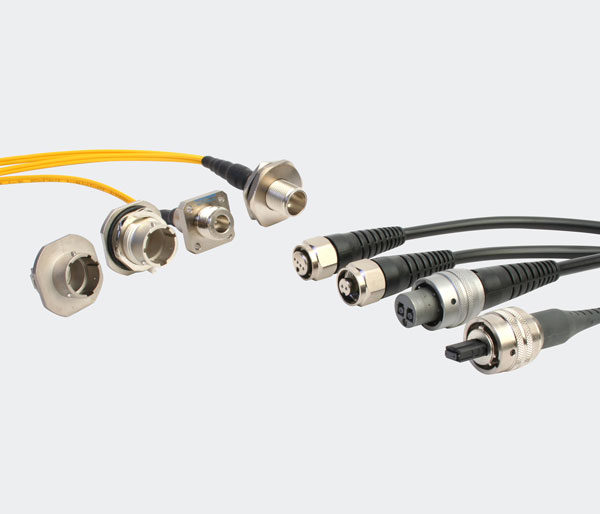Optical information and optical networks have become an important information infrastructure of the country, laying the foundation for the development of smart cities, and supporting the development of strategic emerging industries such as the next generation Internet, mobile Internet, Internet of Things, cloud computing and big data. In the fields of smart security, smart medical care, smart transportation, smart property, smart home, information consumption, etc., there are important applications of optical information technology.
As the core link of the whole optical information and optical network, the optical communication chip will become the focus of people’s attention. As a high-quality service platform focusing on domestic and foreign production, research and development, the 11th Optoelectronics China Expo and the “2019 Third Optical Information and Optical Network Conference” organized by relevant organizations of the China Optical Engineering Society will be held on August 5th. It was held in Beijing National Convention Center on the 7th to build a one-stop service platform for domestic optical chip manufacturers to expand solutions and product markets.
The optical communication chip is a highly integrated component that is the key to achieving mutual conversion between electrical and optical signals. 5G has brought huge opportunities to the optical communication chip market. As the industry booms, domestic communication companies are also increasing the layout of chip research and development, and have introduced strategic plans to carry out industrial layout. Gradually grading upstream chips and core devices, they seize the strategic commanding heights.
In 2013, Huawei has entered the optical communication chip market and has accumulated a lot in the field of optical communication. In that year, Huawei acquired the Bela Silicon Photonics Company Caliopa, announced its participation in the chip battlefield, and later acquired the British photonics integration company CIP, which established its position in the optical chip industry.
In January 2017, Guangxun Technology also planned the layout and invested 60 million yuan to build the Optics Valley Information Optoelectronics Innovation Center. According to statistics, the current shipping capacity of Lightspeed Technology is 80 million chips ever year, and the self-sufficiency rate of chips is about 95%.
In May 2018, Huagong Technology also intensively researched and developed core chip technology, in order to catch up with the 5G construction market. The company invested 60 million to set up a light chip joint venture company, specializing in high-speed optical chips, the products will be mass-produced in 2019.
In September 2018, Jiangsu Hengtong Optoelectronics Co., Ltd. is also expanding its optical chip field. It announced the 100G silicon photonic module project with the UK’s Lockheed Silicon Photonics Co., Ltd., and completed the first trial and reliability test of 100Gbps silicon optical chip.
How do these giant companies lay out the domestic optical chip market? Perhaps you can get the answer from the “2019 Third Optical Information and Optical Network Conference”. The highlights of this conference include the academician Zhao Weisen of Wuhan Institute of Posts and Telecommunications, Academician He Hezhen of China Academy of Engineering, Liu Deming of Huazhong University of Science and Technology, Liu Yunjie of China Unicom, and many other domestic and foreign academicians and experts who came to the site to make a wonderful report to discuss the cutting-edge technology and latest development of optical information network. Industrial application, looking forward to the development trend of the whole industry chain, and adding to the convening of the event.
In addition, China Optical Engineering Society will invite three major domestic operators to gather together. Huawei, ZTE, Fenghuo, Changfei and other leading enterprises will attend the conference. They will cover the latest research hotspots in the whole industry chain, focusing on 5G and new fiber optic cables. The metropolitan area network and the optical modules, optical access, cloud data centers, optoelectronic devices and integration and other hot topics to carry out in-depth exchanges, share the latest technological achievements, and jointly explore the cutting-edge technology, development strategy, and promote exchanges and cooperation between industry, university and research institutes.
High-end chips become the “bottleneck”
China’s overall optical communication chip companies have weak overall strength, and their products are mainly concentrated in the low-end and high-end optical chips. In the event of a foreign enterprise merger and acquisition phenomenon, tightening the chip’s independent intellectual property rights, the domesticization process of China’s high-end optical communication chips may face enormous challenges.
China Electronic Components Industry Association’s “China Optoelectronics Device Industry Technology Development Roadmap (2018-2022)” shows that domestic companies currently only have lasers, detectors, modulator chips and high-end chip capabilities at 10Gb/s and below. More than 1-2 generations behind the developed countries.
Looking at the development of the industry, the development process of the optical chip market is expected to accelerate in the future, but under the opportunity of crisis, the high cost of products will become the biggest “roadblocker”. At present, the cost of the low-rate optical module/optical device optical chip is about 30%, and the cost of the high-speed chip is about 60%. Since high-end optical chips are at the core of the optical communication industry chain, whoever seizes high-tech barriers in the future will be conducive to occupying the commanding heights of the industrial chain.
Due to the rapid iteration of the chip industry update, in the future, major manufacturers must deepen the high-end chip segmentation market and develop differentiated products in order to more smoothly highlight the encirclement. It is expected that domestic enterprises will actively participate in the development of high-end optical communication chips in the future, forming differentiated high-end products and successfully occupying the commanding heights of the industry.




